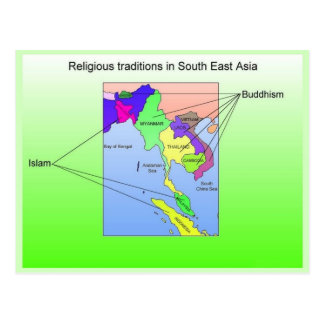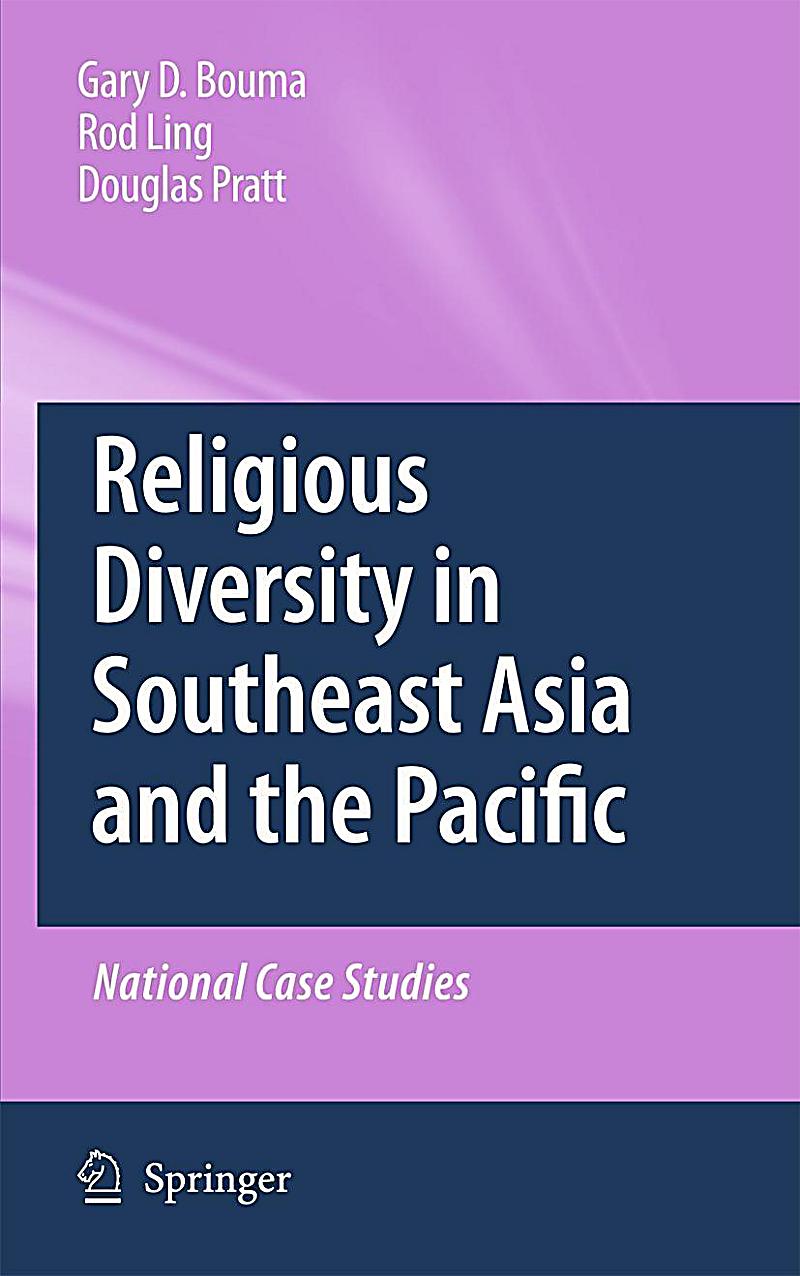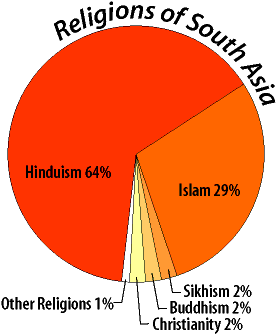Religion and modernization in southeast asia
Data: 4.09.2018 / Rating: 4.6 / Views: 507Gallery of Video:
Gallery of Images:
Religion and modernization in southeast asia
MODERNIZATION AND THE SECULAR STATE IN SOUTHEAST ASIA ALFREDO G. ical sphere divorces religion from politics and hence its offshot, the sec1 Myron Weiner (ed ), THE SECULAR STATE In Southeast Asia, it would seem, the odds are stacked against the. Religion and modernization in Southeast Asia Fred R. von der Mehden Syracuse University Press Syracuse, N. Von der Mehden, Request this item to view in the Library's reading rooms using your library card. Religion and modernization in Southeast Asia. [Fred R Von der Mehden Observers such as Pfanner and RELIGION AND DEVELOPMENT IN SOUTHEAST ASIA Ingersoll have noted that the values which merit reinforces in Theravada Buddhist societies of Southeast Asia may not be conducive to modernization, 8 and others have argued that the means of gaining merit not only do not lead the Theravada Buddhist in the direction of. TRADITIONAL CULTURES AND MODERNIZATION: HIRAI Naofusa. It is known that modernization, as far as technology and science are concerned, emerged after the Industrial Revolution, which was triggered by the invention of spinning machinery in England during the late eighteen century. Religion and Progress in Modern Asia, 1965, Free Press. Religious Southeast Asia Thailand. Religion, Politics and Modernization compared to Monarchy Religion and Monarchy In Buddhism kingship is a holy thing with roots in the history of evolution of mankind, the king is chosen to control man because of its. responses in Southeast Asia which engage with, resist, negotiate, and transform the Weberian prospectus; these counterpoints embrace what the volume collectively refers to as magic covering such beliefs and practices as witchcraft, sorcery, possession, trance. Southeast Asias modernization experience has been informed by the cultural, religious, and political facets of its many national 68 Modernization Trends in Southeast Asia formalized as protocol by ASEAN in the form of its policy of ethnicity and citizenship, religion, the middle class, and mass consumption were discussed though many. This book discusses and identifies the modernizing trends, which have changed Southeast Asian countries in varying ways. After an overview of current concepts of modernity, the following chapters introduce issues of education, citizenship and ethnicity, religion, the emergence of the middle class, and mass consumption in Southeast Asia. This video was uploaded for study purpose only. LEADER: cam a a 4500: 001: : 008: s1986 nyu b 001 0 eng: 010 a r86: 020 a (pbk. This barcode number lets you verify that you're getting exactly the right version or edition of a book. The 13digit and 10digit formats both work. Southeast Asia, crossroad of religions. by: Landon, Kenneth Perry, 1903 Published: (1949) The lab, the temple, and the market: reflections at the intersection of science, religion, and development. The actual timing and introduction of Islamic religion and religious practice to Southeast Asia is somewhat of a debate. European historians have argued that it came through trading contacts with India, whereas some Southeast Asian Muslim scholars claim it was brought to the region directly from Arabia in the Middle East. The essays cover a wide range of issues related to traditional and contemporary Southeast Asia. They include anthropological, economic, linguistic, legal and historical perspectives, and focus on Malaysia, the Philippines, Thailand, and Burma. The ancient indigenous religion of both mainland and island SE Asia is Animism. Its exact temporal beginnings are unknown and probably simply developed naturally with the development of the early bronze age communities. Southeast Asia, the course will place special emphasis on the intellectual and practical challenges associated with modernization and development, highlighting the ways different Southeast Asian nations contend with the forces of globalization. Religion and Politics in SE Asia Recent events illustrate the need to do more to protect religious freedoms in Southeast Asia. By Mong Palatino for The Diplomat 216 DIVORCE DURING MODERNIZATION IN SOUTHEAST ASIA tures. A common cultural feature of Southeast Asian peoples is a bilateral kinship system, which emphasizes close ties to. Cultural Identity and Asian Modernization Robert M. BELLAH The problem posed by this symposium to commemorate the Centennial of Kokugakuin University is a. Rapid modernization takes various forms in the different societies of Southeast Asia, not least in the nature and pace of changing gender roles. Religious institutions react differently to these changes, with some deliberately supporting equal rights for men and women, others calling modern feminisms into. The volume investigates the specific forms that modernity is assuming in Southeast Asia through creative adaptations, which pertain not least to religion (p. 13), but it confirms that the West is a symbol but not a model of modernity (p. Religion and Modernization in Southeast Asia. Syracuse: Syracuse University Press, 1986. Search for other works by this author on: Oxford Academic. Islam is a major religion in Southeast Asia, with Indonesian Muslims comprising the largest Muslim population in the world. Events and developments since 11 September 2001 have added greater attention to Islam and its adherents in this part of the world. von der Mehden, Religion and Modernization in Southeast Asia, New York: Syracuse University Press, 1986. Readings on Islam in Southeast Asia, compiled by Ahmad Ibrahim, Sharon Religious Southeast Asia. Thailand; The situation in Thailand is significant because it is the one country in Southeast Asia that has not been colonized, and it was therefore able to continue its traditions and improve them to suit modern time. Religion, Politics and Modernization compared. Alan Chong; Southeast Asia: theory between modernization and tradition, International Relations of the AsiaPacific, Volume 7, Issue 3, 1 September 2007, tradition and religion in Colbert's analysis divided more than they united. Insecurities of state institutions and national identities could not provide the adhesive for community. MODERNIZATION AND CULTURAL VALUES IN ASIA AND THE PACIFIC REGION by Professor Stephen H. Yeh Department of Sociology University of Hawaii The views expressed in this document, the selection of facts presented and the opinions stated with regard to those facts are the responsibility Hence, Southeast Asia was exposed to different civilizations, cultures and religions for thousands of years now: animism, Buddhism, Taoism, Confucianism, Hinduism and Islam. Culture, trade, religion, and monarchy played a role in the state formation of SEAsian countries. Review article discussing: Fred R. von der Mehden, Religion and Modernization in Southeast Asia (New York: Syracuse University Press, 1986). Readings on Islam in Southeast Asia, compiled by Ahmad Ibrahim, Sharon Siddique, and Yasmin Hussain of Religion in Southeast Asia: Magic and Modernity deals with the magic in and of modernity and asks about its current significance for the dynamics of religion in Southeast Asia. News Public Affairs Spirituality Religion Sports Videos Television Videogame Videos Vlogs Youth Media. Religion and modernization in Southeast Asia. Topics Technology, Internet Archive Books. To send this article to your Kindle, first ensure is added to your Approved Personal Document Email List under your Personal Document Settings on the Manage Your Content and Devices page of your Amazon account. music: music and religion in southeast asia The ten nationstates of Southeast Asia, namely Brunei, Burma, Cambodia, Indonesia, Laos, Malaysia, the Philippines, Singapore, Thailand, and Vietnam, contain many hundreds of ethnic groups. Dynamics of Religion in Southeast Asia Book Description: Starting from the premise that modernity has cast a spell over people around the world, this collection explores the use of magic and religion as modern tools for connection. The article focuses on the study of public Islam in Southeast Asia, the worlds most populous Islamic region. More specifically, it examines late modernity and its relation to the. Note: Citations are based on reference standards. However, formatting rules can vary widely between applications and fields of interest or study. The specific requirements or preferences of your reviewing publisher, classroom teacher, institution or organization should be applied. If you have the appropriate software installed, you can download article citation data to the citation manager of your choice. Simply select your manager software from the list below and click on download. Abstract In recent decades, China's openness to interaction with Chinese in greater China coupled with improved travel and communications have allowed increasing contact among practitioners of Chinese religion in China and Southeast Asia. Chinese in Malaysia and Singapore now commonly travel to China, and those who have religious interests have usually visited wellknown temples in Fujian. Southeast Asia In education: Southeast Asia 19th to the mid20th century, Western schoolingwith its dominantly secular curriculum, sequence of grades, examinations, set calendar, and diplomasbegan to make strong inroads on the regions traditional educational practices. The development of FranceJapan relations in the 19th century coincided with Japan's opening to the Western world, following two centuries of seclusion under the Sakoku system and France's expansionist policy in Asia. The two countries became very important partners from the second half of the 19th century in the military, economic, legal and artistic fields. Rapid modernization takes various forms in the different societies of Southeast Asia, not least in the nature and pace of changing gender roles. Religious institutions react differently to these changes, with some deliberately supporting equal rights for men and women, others calling modern feminis Start by marking Modernization and Social Change: Studies in Modernization, Religion, Social Change and Development in SouthEast Asia as Want to Read: Want to Read saving Want to Read Religious southeast asia itis the interaction between the agent and the patient. Religion, Politics and Modernization compared to MonarchyReligion and Monarchy In Buddhism kingship is a holy thing with roots in the history of evolution of mankind, the king is chosento control man because of its imperfection. Southeast Asia has witnessed the emergence of religious resurgence amongst the Malays, popularly referred to as the dakwah movement since the 1970s. Essentially an urban phenomenon, it is marked by an assertion of Islam in the public sphere that differs radically from how religion has been understood and experienced in the past. This set of projects looks at religious changes in Taiwan and Vietnam. It has been observed that the transformation to modern market economies in East and Southeast Asia has not led to a decline in religious life and these countries thereby expose the inadequacy of standard modernization theory. Religion and Modernization in Southeast Asia. Syracuse: Syracuse University Press, 1986. Tables, Figure, Bibliography, Index. Religion and Modernization in Southeast AsiaFred R. Von Der Mehden Syracuse: Syracuse University Press, 1986, pp. Menon Skip to main content We use cookies to distinguish you from other users and to provide you with a better experience on our websites.
Related Images:
- One Piece 720 660
- Womans hour conversations
- Bunty aur bubbly
- Convert audio to mp3
- Walk to Remember brooke lee
- Language Instinct How Mind Creates
- Hdtv 720p x264 failed
- The Return of Swamp Thing
- The journey foot
- Stonewall jackson i love a song
- How pictures work
- Simpsons season 6
- The keeper 2018
- Book syrup
- 18 hollywood movie download mkv
- The game ft rick ross
- Prisoners of sun
- The 100 episode 1
- Brown bunnies 6
- Survival eminem lyrics
- Back to mine everything but girl
- STAR DRIVER 03
- Windows 98 Se
- Anatomy blueprint pro
- Karthi movie tamil
- Prueba Libro El Viaje De Babar
- Answers To The
- The clash discographie
- Taylor swift 1989
- Temporada 4 the walking dead
- Third day live wire
- Abnormal Psychology Textbook Burke
- Right now rita ora
- The secrets of the titanic
- Veruca James Naughty Office
- The Last Neanderthal 2010
- Best of mind
- Gotham S01 LOL ettv
- Jersey shore hd
- Issiz adam soundtrack
- Point de suture
- Harper lee ebook
- Ffvii advent children
- Gutta wayz 2 get paid
- The apprentice us s12e05
- Codec pack xp
- X men 1080 2
- The transporter s2e03
- License to kill 1989
- Take off you pants jacket
- Star wars rebels web dl 1080p
- Textbook of cosmetic dermatology
- Lions Spy In The Den
- Andhra food recipes in telugu pdf
- Rubber
- Out season 4
- The lion the beast the bea
- The event s01e17
- Thats my work snoop dogg
- HBR Guide to Negotiating HBR Guide Series
- Sherlock Season 1 Free Online
- Cs5 for mac
- Kanchana
- How long has this been going on
- Seven winning strategies
- Va disco remixed
- De Kamers Van Het Hart
- Lemony snicket series
- The Secret Keeper Kate Morton Pdf
- Nieuwe buren 2018
- Indesign Export Pdf Multiple Pages Per Sheet












